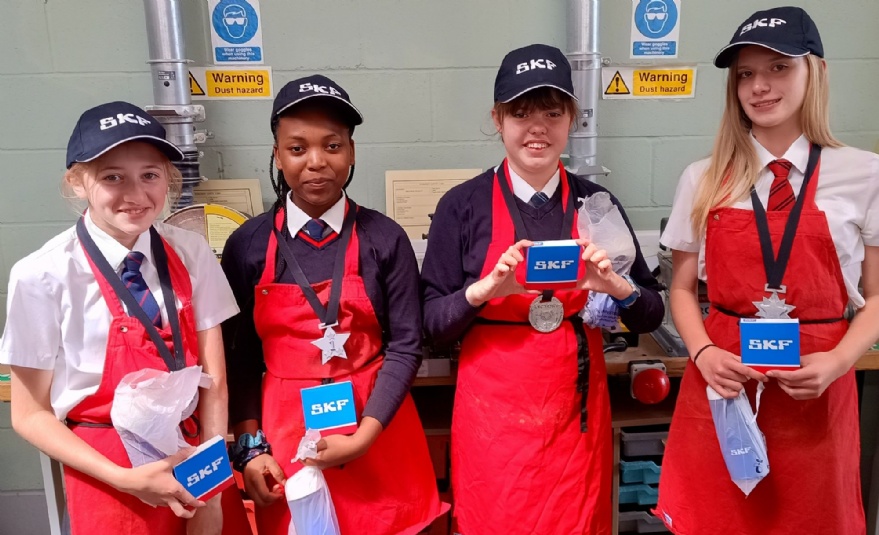Students Cast Their Own Winning Medals

A group of Year 8 pupils from all four high schools in our Trust joined forces when they were challenged to design the medal which would be cast in aluminium at a specialist company.
The secondary school students worked with SKF Cooper, a company in South Lynn with a long history of engineering and invention.
The students from Springwood, Smithdon, Marshland and St Clement’s High Schools used Computer Aided Design techniques to make a pattern using a 3D printer.
The teams then met at Smithdon, in Hunstanton, to cast the designs in aluminium, working with Nigel Willingham, Headteacher and Design and Technology teacher at St Clement’s High School.
“It was great to see students from across the Trust working together to create these products. Casting is not seen in many schools so we were delighted to be able to offer our students the opportunity to see this engineering process in action,” he said.
Prior to launching the project, teachers from the Trust visited the SKF Cooper site to see the casting process being used in an industrial setting. They also completed additional safety training to ensure they were qualified to teach the process to students.
“I’m grateful to Gary Hellard from SKF Cooper who has supported us throughout the project and came to work with the students and judge the outcomes on casting day,” said Mr Willingham.
All the students were rewarded with SKF water bottles and the four winners also received caps and chocolate bearings.
“The students have all been brilliant throughout the day and worked really hard. We hope to see some of them applying for our apprenticeships in a few years. Engineering skills are still very much in demand, and it’s been great to see the design and technology teachers come together to deliver this project,” said Mr Hellard.
Cooper was established by Thomas Cooper, an inventor and brilliant engineer in 1894 in King’s Lynn. His first major invention was a revolutionary steam digger for use in arable farming.
After his death and throughout the second half of the 20th Century, it has focused on the ground-breaking split bearing he designed in 1907.
